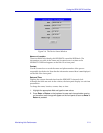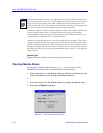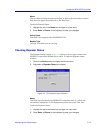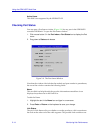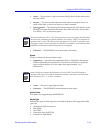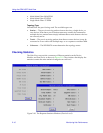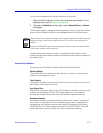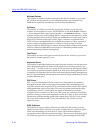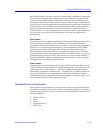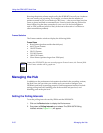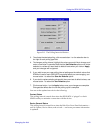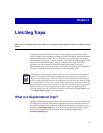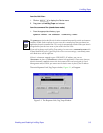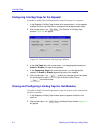
Monitoring Hub Performance 2-19
Using the SEHI100TX Hub View
802.3 speciÞcations, or a node on the net is transmitting without Þrst listening for
carrier sense (and beginning its illegal transmission more than 51.2 µs after the
Þrst station began transmitting). Note that in both cases, the occurrence of the
errors can be intermittent: in the case of excessive network length, OOW collisions
will only occur when the farthest stations transmit at the same time; in the case of
the node which is transmitting without listening, the malfunctioning node may
only fail to listen occasionally, and not all of its failures to listen will result in
OOW collisions Ñ some may simply result in collisions (if the 51.2 µs window has
not yet closed), and some will get through Þne (if no one else happens to be
transmitting).
Runt Frames
The number of received packets smaller than the minimum Ethernet frame size of
64 bytes (excluding preamble). This minimum size is tied to the maximum
propagation time of an Ethernet network segment Ñ the maximum propagation
time is 51.2 µs, and it takes approximately 51.2 µs to transmit 64 bytes of data;
therefore, every node on the segment should be aware that another node is
transmitting before the transmission is complete, providing for more accurate
collision detection. Runts can sometimes result from collisions, and, as such, may
be the natural by-product of a busy network; however, they can also indicate a
hardware (packet formation), transmission (corrupted data), or network design
(more than four cascaded repeaters) problem.
Giant Frames
The number of received packets that are longer than the maximum Ethernet size
of 1518 bytes (excluding preamble). Giant packets typically occur when you have
a jabbering node on your network Ñ one that is continuously transmitting, or
transmitting improperly for short bursts Ñ probably due to a bad transmitter on
the network interface card. Giant packets can also result from packets being
corrupted as they are transmitted, either by the addition of garbage signal, or by
the corruption of the bits that indicate frame size.
The SEHI100TX Error Priority Scheme
Each Cabletron device employs an error priority scheme which determines how
packets with multiple errors will be counted, and ensures that no error packet is
counted more than once. The priority scheme for the SEHI100TX counts errors in
the following order:
1. OOW Collisions
2. Runts
3. Giants
4. Alignment Errors
5. CRC Errors



